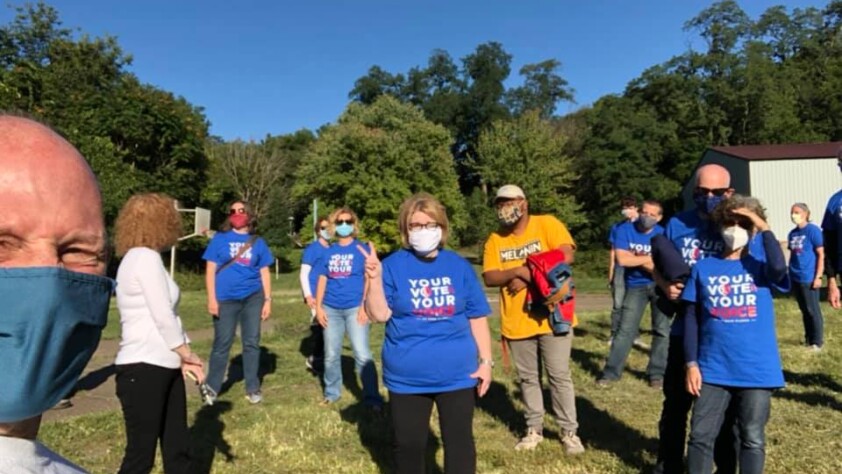DAY 18: BUSINESS/FINANCE PT1 – MIND OVER MONEY; THE CURIOUS CASE OF LEVELING THE ECONOMIC PLAYING FIELD
As Black businesses burst onto the scene, a new expectation emerged. African Americans began to represent a significant segment of the consumer market share, meaning that new business models needed to consider products and services which satisfied their demographic. From hair care to garments, food, and music, businesses created huge profits on items geared solely toward the Black community. A holistic self-supporting community emerged, producing Black-owned and operated businesses.
Although many Black communities struggled to maintain their prosperity due to systematic racism, one community flourished, setting a new precedent. Harlem, NY, became a thriving Black community, spearheaded by cultural activities such as literature, music, stage performance, and art. Amidst this cultural phenomenon was the development of strong Black business.
The Harlem Renaissance, the period from the 1910s through the 1930s, was considered the Golden age of African American cultural development. Historians mostly focus on the cultural explosion than the undergirding businesses. #LetTheTruthBeTold, Writing and selling books, operating entertainment clubs, restaurants, and creating extraordinary art forms in various disciplines doesn’t happen without strong business models that embody unique capitalistic creativity. Ladies and gentlemen, The Harlem Renaissance. #LetTheTruthBeTold
We have chosen to focus on a select group of businesses owners that flourished during the Harlem Renaissance. We celebrate their determination to change the perception of Black peoples contributions and thus change the landscape and future of our country. Today we honor their genius. We must not let their efforts be forgotten or let others bask in the credit of their achievements. Today we change the narrative. #LET THE TRUTH BE TOLD.
“HArlem Renaissance”
THE GOLDEN AGE OF AFRICAN AMERICAN CULTURAL DEVELOPMENT
In the early 1900s, particularly in the 1920s, African American literature, art, music, dance, and social commentary began to flourish in Harlem, a section of New York City. This African-American cultural movement became known as “The New Negro Movement” and later as the Harlem Renaissance. More than a literary movement, the Harlem Renaissance exalted the unique culture of African-Americans and redefined African American expression. African-Americans were encouraged to celebrate their heritage. Additionally the movement produced several unique liberal arts career paths and supporting business infrastructure.
The main factors contributing to the development of the Harlem Renaissance were African-American urban migration, trends toward experimentation throughout the country, and the rise of radical African-American intellectuals. The Harlem Renaissance transformed African-American identity and history, but it also transformed American culture in general. Never before had so many Americans read the thoughts of African-Americans and embraced the African-American community’s productions, expressions, style and entrepreneurial spirit.
“Key Individuals of the Harlem Renaissance”
W.E.B. DUBOIS, AND LANGSTON HUGHES,
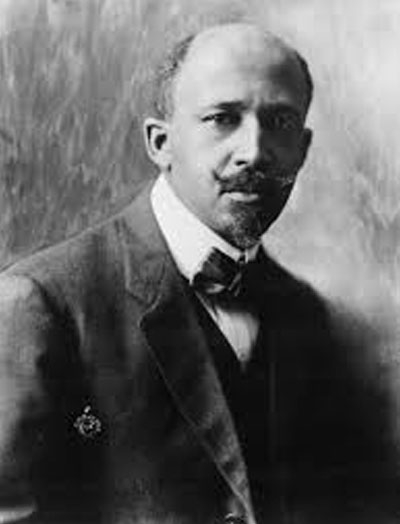
W.E.B. Dubois
Encouraged Creative Entrepreneurship to change the perception of how Blacks were portrayed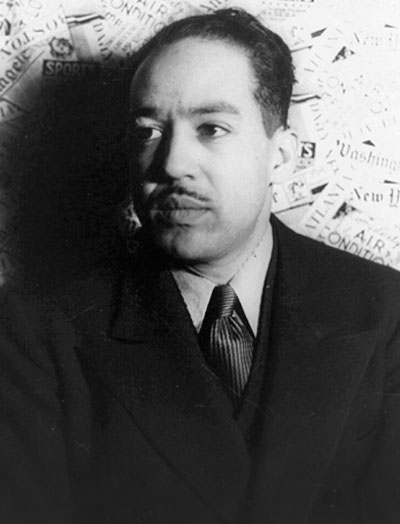
Langston Hughes,
Poet and Author launched and maintained successful career as a world renowned writer
Educator, essayist, journalist, scholar, social critic, and activist W.E.B. DuBois, was born to Mary Sylvina Burghardt and Alfred Dubois on February 23, 1868 in Great Barrington, Massachusetts. He excelled in the public schools of Great Barrington, graduating valedictorian from his high school in 1884. Four years later he received a B.A. from Fisk University in Nashville, Tennessee. In 1890 DuBois earned a second bachelor degree from Harvard University.
DuBois began two years of graduate studies in History and Economics at the University of Berlin in Germany in 1892 and then returned to the United States to begin a two year stint teaching Greek and Latin at Wilberforce University in Ohio. In 1895, DuBois became the first African American to earn a Ph.D. at Harvard University. His doctoral thesis, “The Suppression of the African Slave Trade in America,” became the first book published by Harvard University Press in 1896. Later that year DuBois married Nina Gomer and the couple had two children. After the death of his first wife in 1950, DuBois married Shirley Graham who remained his wife until his death. DuBois also joined Alpha Phi Alpha and Sigma Pi Phi Fraternities.
Before the close of the 19th century, DuBois also taught at the University of Pennsylvania and Atlanta University. During this time, he became the first scholar to systematically study African American urban life. DuBois’s first post-dissertation book, The Philadelphia Negro, released in 1899, determined that housing and employment discrimination were the principal barriers to racial equality and black prosperity in the urban North. His work and conclusions initiated the field of African American urban history.
Poet, novelist, playwright, librettist, essayist, and translator, James Mercer Langston Hughes was born in Joplin, Missouri on February 1, 1902, to parents Caroline (Carrie) Mercer Langston, a school teacher, and James Nathaniel Hughes, an attorney. His parents separated before Langston was born and he spent his pre-adolescent years with his maternal grandmother, Mary Patterson Langston, in Lawrence, Kansas. Mary Langston was the second wife of Charles Henry Langston, a major black political activist in Kansas, and the sister-in-law of former U.S. Congressman John Mercer Langston. After his grandmother’s death, Caroline married Homer Clark, a steel mill worker in Lincoln, Illinois. The couple settled in Cleveland, Ohio with Langston and his younger brother, Gwyn.
Hughes was fiercely independent from an early age. When his mother and brother followed his stepfather who occasionally left the family in search of higher wages, Langston stayed in Cleveland to finish high school. He also had a volatile relationship with his attorney father who pursued work in Cuba and who by 1920 was general manager of an American company in Mexico. Langston Hughes joined his father in Mexico City briefly in 1919, moved back to Cleveland to complete high school, and then upon receiving his diploma in 1920, returned to Mexico City.
Rather than acquiesce to his domineering father’s demands that he pursue a degree in mining engineering, Langston moved to New York City, New York and enrolled in Columbia University. Hughes quit Columbia after a year and decided to acquire a more worldly education. In 1922, he began a two-year stint as a ship’s crewman, during which he traveled to, and spent considerable time in, western Africa, France, and Italy. He also briefly lived in the expatriate community in London, England before returning to the United States in November 1924 to live with his mother in Washington, D.C. In 1925, he became the personal assistant of historian Carter G. Woodson, the founder of the Association for the Study of African American Life and History.
(1926) LANGSTON HUGHES, “THE NEGRO ARTIST AND THE RACIAL MOUNTAIN”
ZORA NEALE HURSTON AND JAMES VAN DER ZEE
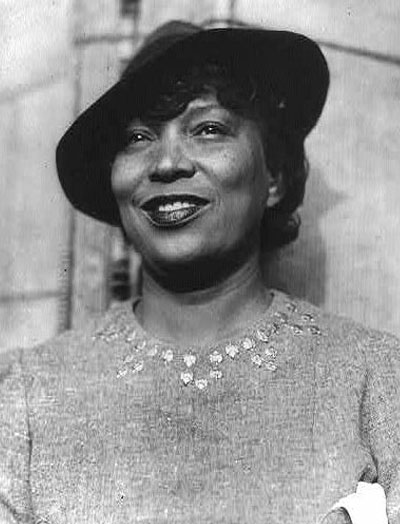
Zora Neale Hurston
Harlem Renaissance Writer – most famous work “Their Eyes Were Watching God.”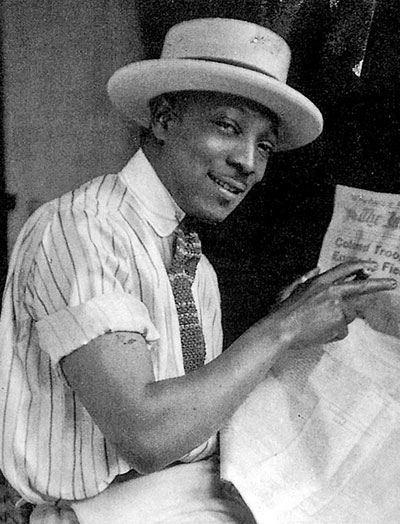
James Van Der Zee
Operated a successful photography business during the Harlem Renaissance
Zora Neale Hurston, known for her audacious spirit and sharp wit, was a talented and prolific writer and a skilled anthropologist from the Harlem (New York) Renaissance to the Civil Rights Era. Born on January 7, 1891 in Notasulga, Alabama, she grew up in the all-black town of Eatonville, Florida. Her idyllic life in this provincial rural town was shattered with the death of her mother when Hurston was 14 and her father’s unexpected remarriage. In a few years Hurston was on her own working as a maid. She settled in Baltimore, Maryland and completed her education at Morgan Academy and Howard University.
Hurston’s talent was readily apparent to her professors including Alain Locke and Montgomery Gregory. With Locke’s and Gregory’s support her short story “John Redding Goes to Sea” was published in Howard’s literary magazine Stylus in 1921. Locke recommended Hurston’s work to Charles S. Johnson, who in 1924 published her second short story, “Drenched in Light” in Opportunity magazine.
James VanDerZee was an African American photographer during the Harlem Renaissance who was best known for his pictures that captured the lives of African Americans in New York City, New York. He had a gift for capturing the most influential individuals and riveting artistic moments of the era. Early 20th century black activist Marcus Garvey, black entertainer/ dancer Bill “Bojangles” Robinson and renowned black poet Countee Cullen were among his more prominent subjects.
VanDerZee was born in Lenox, Massachusetts in 1886. He demonstrated a gift for music and initially aspired to a career as a professional violinist.
VanDerZee’s other interest was photography. At the age of fourteen he received his first camera as a result of a magazine promotion. His interest in photography led him to take hundreds of photographs of his family and the town of Lenox. As one of the first people in the town to own a camera he was able to provide a rich early documentation of community life in small town New England. As always VanDerZee’s photography incorporated his own distinctive flair.
James VanDerZee moved to New York City in 1906 to work with his father and brother as waiters and elevator operators. By now a skilled pianist and aspiring professional violinist, he was also the primary creator and one of the five performers in a group known as the Harlem Orchestra.
“Finger on the Pulse”
MARCUS GARVEY AND CLAUDE MCKAY
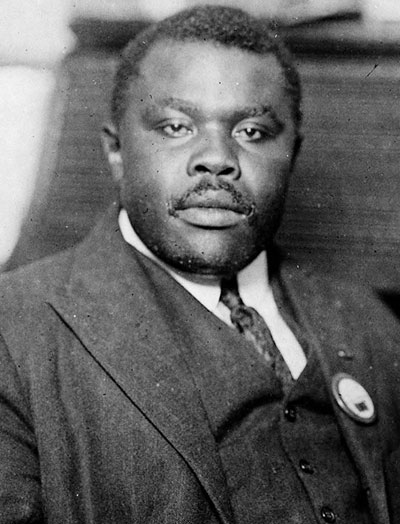
Marcus Garvey
Developed “The Black Star” a Steam Ship import/export company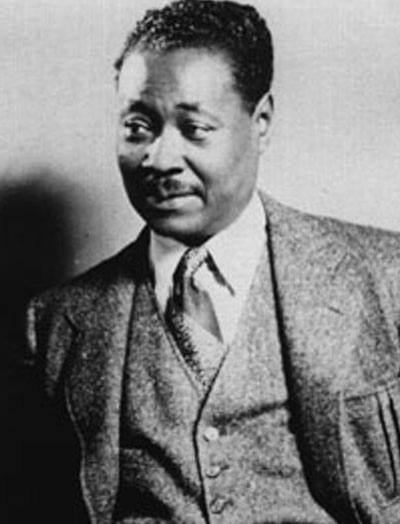
Claude McKay
first significant writers of the Harlem Renaissance
Marcus Mosiah Garvey, one of the most influential 20th Century black nationalist and Pan-Africanist leaders, was born on August 17, 1887 in St. Ann’s Bay, Jamaica. Greatly influenced by Booker T. Washington’s autobiography Up From Slavery, Garvey began to support industrial education, economic separatism, and social segregation as strategies that would enable the assent of the “black race.” In 1914, Garvey established the Universal Negro Improvement Association (UNIA) in Kingston, Jamaica, adopting Washington’s inspirational phrase “Up, you mighty race; you can conquer what you will.” By May of 1917, Garvey relocated the UNIA in Harlem and began to use speeches and his newspaper, The Negro World, to spread his message across the United States to an increasingly receptive African American community. His major audience included the thousands of Southern blacks who were then migrating from the “shadow of slavery and the plantation” to the urban North. Black veterans of World War I were another Garvey audience. Most of them had experienced both French equality and US military bigotry and returned home as militant “race men.” They were attracted to Garvey’s calls. The UNIA grew larger still following the race riots in the Red Summer of 1919.
Garveyism resonated with the rapidly urbanizing black community and spread beyond the United States to the Caribbean, Latin America and Africa. Regardless of the locale, Garvey’s UNIA promised black economic uplift via self-reliance, political equality via self-determination, and the “liberation of Africa from European colonialism via a Black army marching under the Red, Black, and Green flag of Black manhood.” Africa’s redemption, according to UNIA supporters was foretold in the messianic Biblical Psalms 68:31 “Princes shall come out of Egypt; Ethiopia shall soon stretch out her hands unto God.” However, it was Garvey’s ability to convey, in his vivid and powerful speeches, the distinct possibility of achieving these goals that led the UNIA to become an organization of millions. When Garvey bellowed, “I am the equal of any white man [and] I want you to feel the same way,” he inspired the faithful and attracted the curious. Addressing the gender question Garvey wrote, “Black queen of beauty, thou hast given color to the world…Black men worship at thy virginal shrine of purest love…!” Garvey even created a new black faith by ordaining Reverend George Alexander McGuire as Chaplain General of the African Orthodox Church. McGuire’s sermons urged Garveyites to “Erase the white gods from your hearts.”
If we must die, let it not be like hogs, hunted and penned in an inglorious spot, while round us bark the mad and hungry dogs, making their mock at our accursed lot.
CLAUDE McKAY
Harlem Renaissance writer Festus Claudius McKay was born on September 15, 1889, in Sunny Ville, in the Clarendon Hills of Jamaica, to peasant farmers Hannah Ann Elizabeth Edwards and Thomas Frank McKay. Young Claude was tutored by his elder schoolmaster brother, Uriah Theodore McKay, who introduced him to a library dominated by the ideas of the great free thinkers, particularly Thomas Huxley and Herbert Spencer. While working in Kingston as a constable, McKay became the protégé of Walter Jekyll, a British aristocrat and anthropologist who also placed his personal library at Claude McKay’s disposal.
McKay published his first two volumes of poetry, Songs of Jamaica (1912) and Constab Ballads (1912), written in the island’s rich dialect, before migrating to America to study agronomy at Booker T. Washington’s Tuskegee Institute in Alabama and later at Kansas State University. By 1917, however, he was no longer in college and living in Harlem.
McKay’s very formal sonnets, “Harlem Shadows” and “Innovations,” published in the Liberator in 1917, place him among the founders of the emerging Harlem Renaissance. Yet his militant sonnets: “If We Must Die,” “The White House,” and “America,” first published in 1919, best epitomized the uncompromising “voice” of this “New Negro movement.” With the publication of Spring in New Hampshire (1920) and Harlem Shadows (1922) during the early years of the Harlem Renaissance, McKay emerged as one of its significant poets. While many literary critics and historians point to the militant voices of McKay’s speakers and the radicalism of his associates on the political left, and especially the Communist Party in the early 1920, McKay remained an incurable Romantic, infected by the pastoral legacies of agrarian Jamaica.
“MUSICAL GENIUS”
ELLA FITZGERALD, DUKE ELLINGTON AND LOUIS ARMSTRONG
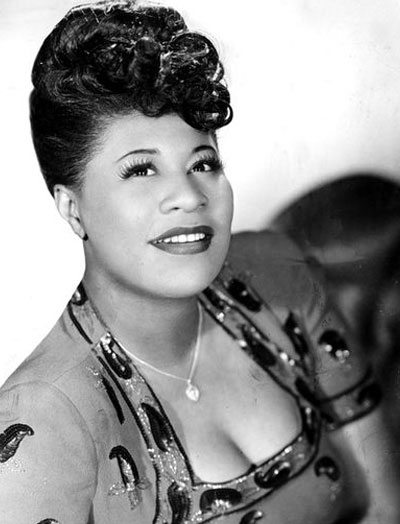
Ella Fitzgerald 
Duke Ellington
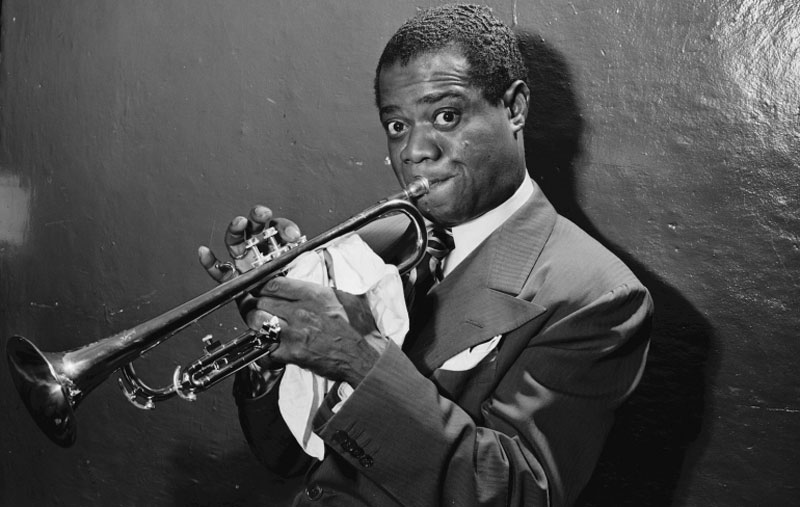
Ella Fitzgerald was a female jazz singer considered without equal at the height of the jazz era. Her voice had an amazing and vibrant range that allowed her to sing nearly every jazz style. Ella was also an accomplished composer and bandleader who performed into the 1990s.
Born in Newport News, Virginia on April 25, 1917, Ella grew up in Yonkers, New York in poverty. She developed a love of music from a young age and at 17 won an amateur contest at the Apollo Theater in Harlem with her rendition of “Judy” that earning her a week’s engagement at the prestigious entertainment venue. Additionally she was noticed by jazz drummer Chick Webb.
Edward Kennedy “Duke” Ellington is one of the greatest jazz composers, performers, and bandleaders in American history. His compositions, and the travels of his band, exposed the world to jazz and earned him the nickname, “The Ambassador of Jazz.”
Edward Kennedy Ellington was born in Washington, D.C. in 1899 to Daisy and James Ellington. Ellington’s parents appreciated good manners, dress, food, and a love of music (both played piano, though neither could read music) and diligently passed these characteristics on to their son. This “duked up” appearance earned him the nickname “Duke” growing up, and it stuck for the rest of his life. Starting with piano lessons at age six, and continuing with private lessons from local bar players, Duke developed a love and talent for ragtime music.
Louis Daniel (Louie) Armstrong is perhaps the most important and influential person in the history of jazz music, swing music, and jazz vocal styling. His virtuosic ability with the trumpet, his distinctive gravelly low vocal style, his bright personality, and his band leadership abilities helped to build jazz into a popular musical genre and influenced nearly every jazz musician after him.
Louis Armstrong was born August 4, 1901 in New Orleans, Louisiana into an impoverished family. In 1912 he fired a pistol in the air during a New Year’s celebration, was arrested, and sent to a waif’s home. It was here that he learned how to play the cornet. He immediately began playing in various jazz bands in and around New Orleans. From 1922 to 1924 Armstrong was a member of King Oliver’s band in Chicago, Illinois which was the most popular jazz band of the time. By 1924 as his playing abilities surpassed Oliver’s, Armstrong’s wife Lillian persuaded him to join Fletcher Henderson’s band in New York to move beyond Oliver’s shadow.
Armstrong brought to New York City a new, flowing, improvisational style of jazz that spread rapidly and influenced countless jazz musicians who were enthralled by it. Soon he began recording backup for blues artists like Bessie Smith and Ma Rainey.
“Visual Motifs”
WILLIAM H. JOHNSON AND ELLIS WILSON
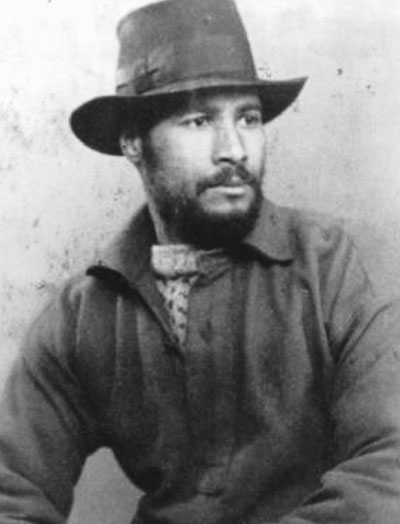
William H. Johnson
Prolific Harlem Renaissance Painter
Ellis Wilson
Worked to exhibit the work of black artist
ACTIVE FOR ABOUT TWO DECADES, American artist William H. Johnson (1901-1970) made paintings in two distinct styles over the course of his career. Living in Europe from the mid-1920s to 30s, he developed a modern aesthetic making expressive and moody landscapes and later took an interest in folk art and what he called a “primitive” style.
Upon his return to the United States, he settled in New York City’s Greenwich Village and fully embraced the simplicity of folk art. In the late 1930s to mid 1940s, Johnson produced color-driven portraits, scenes of African American life in Harlem and the rural South, and his celebrated Jitterbug images of nattily dressed couples intertwined and dancing.
April marks 50 years since the death of Johnson. Coinciding with the milestone, his work is showcased in several presentations this year. Works by Johnson are on long-term view at the Smithsonian American Art Museum in Washington, D.C. The artist has also been represented in thematic exhibitions across the country, including “Detroit Collects: Selections of African American Art from Private Collections” (Nov. 29, 2019-March 15, 2020) on view since last fall at the Detroit Institute of Arts.
Currently, Johnson is featured in “African American Art in the 20th Century” at The Westmoreland Museum of American Art in Greensburg, Pa. (Feb. 15–May 10, 2020) and “Riffs and Relations: African American Artists and the European Modernist Tradition,” which opened at The Phillips Collection in Washington, D.C., two weeks ago (Feb. 29-May 24, 2020).
In addition, Michael Rosenfeld Gallery dedicated its entire booth to Johnson at The Art Show, the recent art fair organized by the Art Dealers Association of America (ADAA) at the Park Avenue Armory in New York (Feb. 27-March 1).
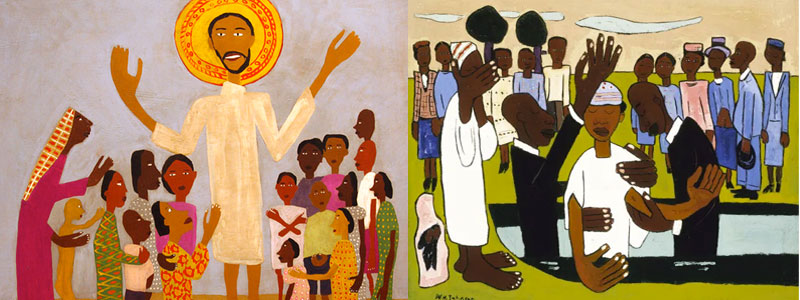
(Left) William H. Johnson, Come Unto Me Little Children, 1943. Oil on compressed cardboard
(Right) WILLIAM H. JOHNSON, “I Baptize Thee,” circa 1940 (oil on burlap)
A prominent contributor to the New Negro Movement in Harlem, Ellis Wilson is best known for his paintings of black culture in his native South and in Haiti. Wilson, who in his own words, sought “to create paintings which [would] be a credit to [his] Race,” presented his subjects with objectivity and dignity, devoid of idealization or mythical attributes. Recognized as a colorist with a preference for simplified modern compositions, Wilson faithfully captured the disappearing rural lifestyle of Southern African Americans.
Wilson credited his father, an amateur painter who worked in what Wilson described as a primitive style, as his source of artistic talent. Although his father was forced to set aside his brush to support his large family, Ellis managed to continue painting throughout his life, even as he worked for various commercial enterprises. As a youth in Mayfield, Kentucky, Wilson necessarily held a variety of odd jobs, constantly looking for creative outlets in the midst of the mundane. While serving as the janitor for a local dress shop, for example, Wilson drew pictures on the store window using cleaning soap, an exercise that was subsequently encouraged by the shop owner as a promotional ploy.
In 1916, Wilson enrolled in Frankfurt’s all-black Kentucky Normal and Industrial Institute. Frustrated that his studies here were limited to either agriculture or education, he embarked on a decade-long sojourn in Chicago. There, Wilson earned a degree from the Art Institute of Chicago in 1923 and participated in the Chicago Art League. The typically shy and reserved youth blossomed during these years. It was a time of inspiration for Wilson, who was interacting with other creatively minded African Americans.
Watch Video of Full Life Story
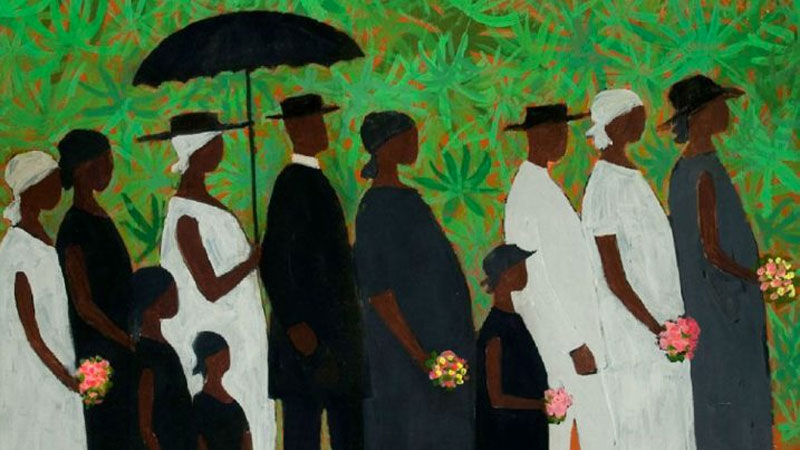
Ellis Wilson “Funeral Procession”
“Renaissance Man”
IN LONDON PAUL ROBESON ROSE TO INTERNATIONAL ACCLAIM FOR HIS ROLE IN “OTHELLO” (1939)
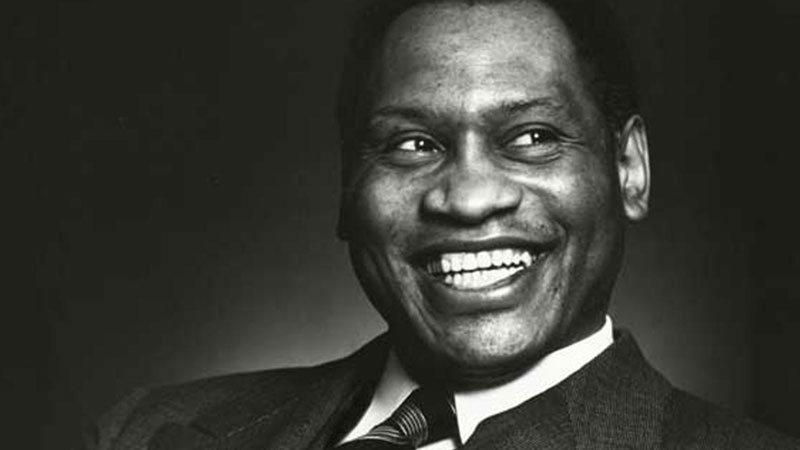
Paul Robeson is best known as a world famous athlete, singer, actor, and advocate for the human rights of people throughout the world. Over the course of his career Robeson combined all of these activities into a lifelong quest for racial justice. He used his deep baritone voice to communicate the problems and progress associated with black culture and community, and to assist the labor and social movements of his time. He sang for multiracial and multiethnic peace and justice in twenty-five languages throughout the United States, Europe, and Africa.
Robeson was born in Princeton, New Jersey on April 9, 1898, to Reverend William Drew Robeson, the pastor of Princeton’s Witherspoon Street Presbyterian Church, and Maria Louisa Bustill Robeson. His mother was from a prominent local mixed-race family and his father was a former slave who escaped from a plantation before the Civil War. Robeson was the youngest of four children.
Robeson’s mother died when he was six and his father struggled to care for the two youngest children. By 1912 the family had moved to Somerville, New Jersey where the young Robeson already was a standout athlete and stage performer. He also preached in his father’s church.
MORE NOTABLE CONTRIBUTORS AND ENTREPRENEURIAL ENDEAVORS
Artist are the gatekeepers of the truth, we are the civilizations radical voice.
Paul ROBESON
Content provided courtesy of History.com, Britannica.com and Wikipedia.com, Biographies.com, Blackpast.com, ncpedia.com, notablebiographies.com, www.sdhc.k12.fl.us, and education.ket.org. All Rights Reserved.


